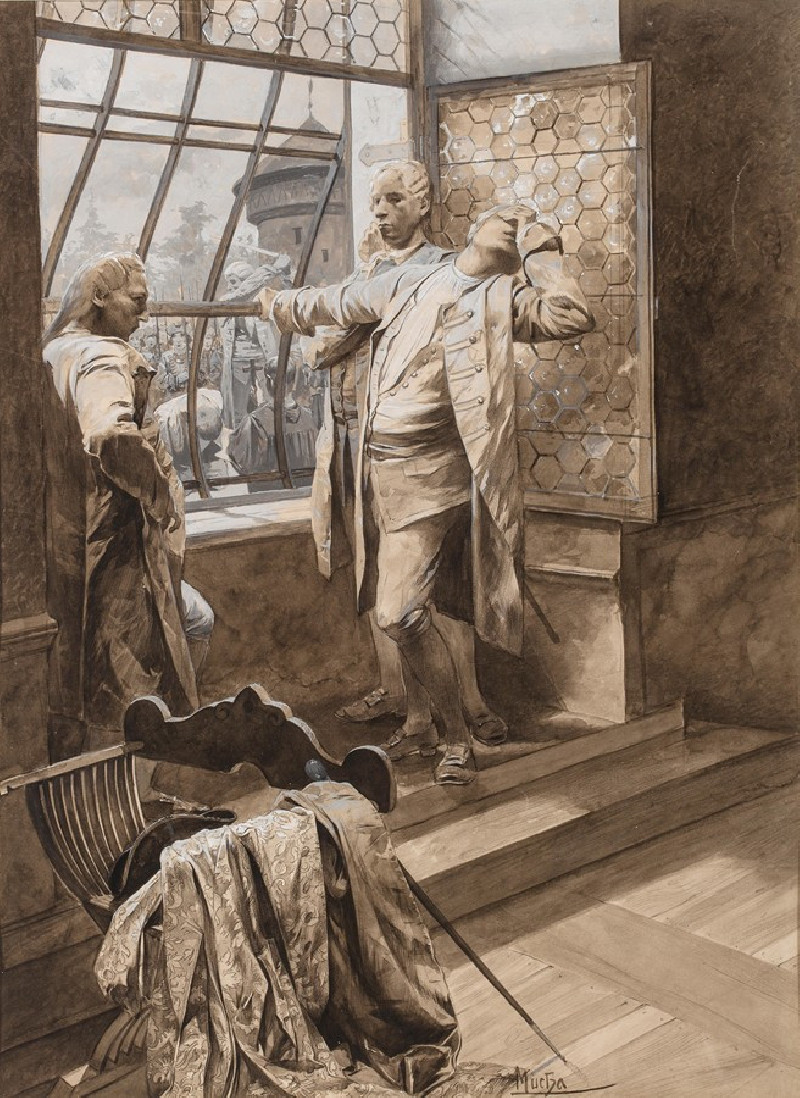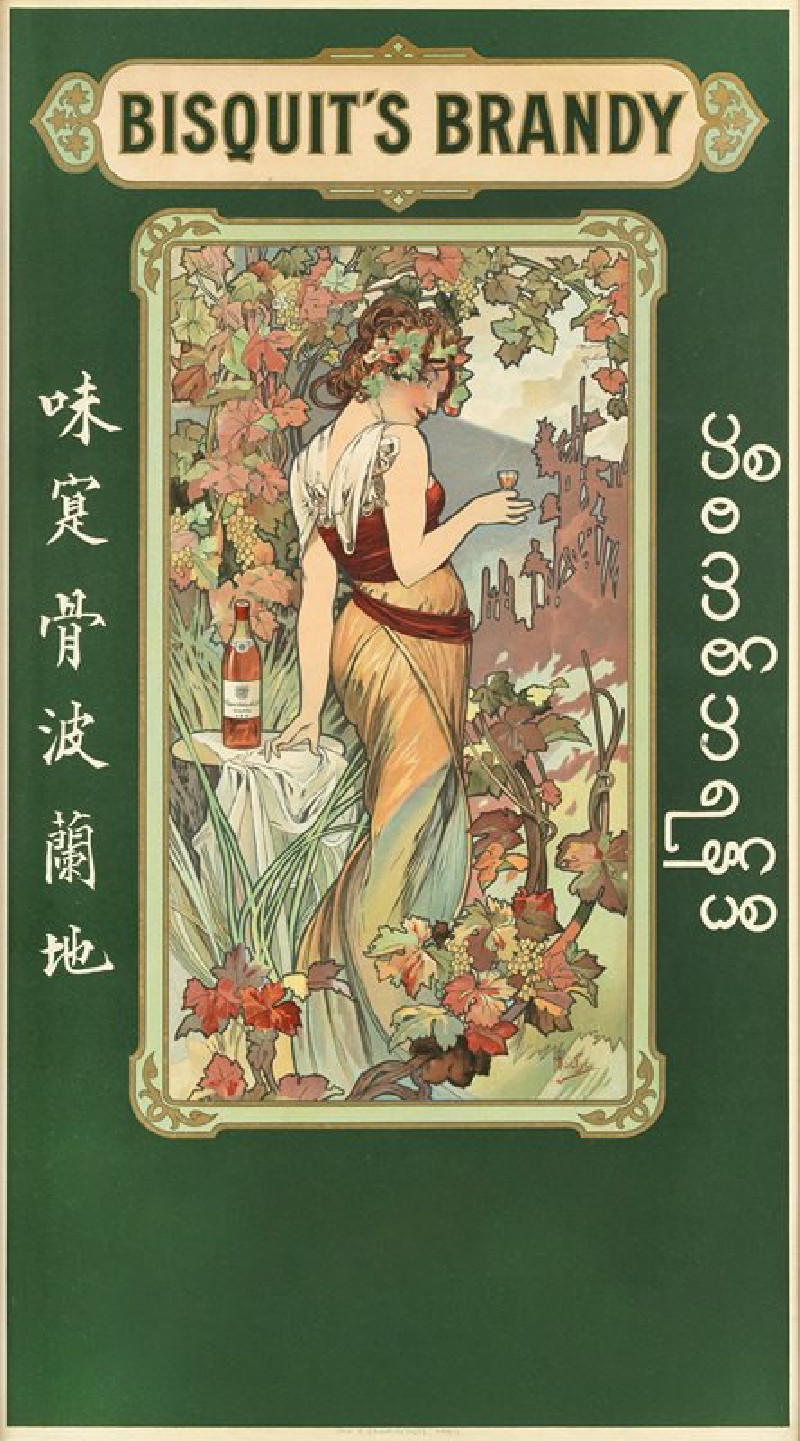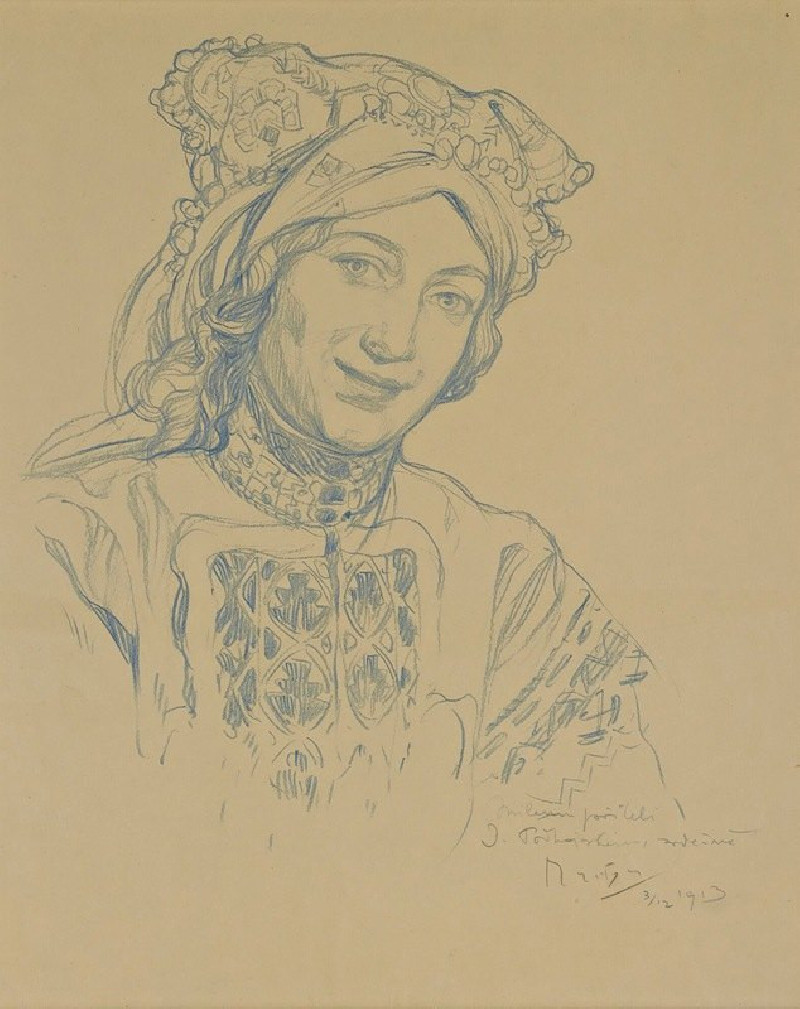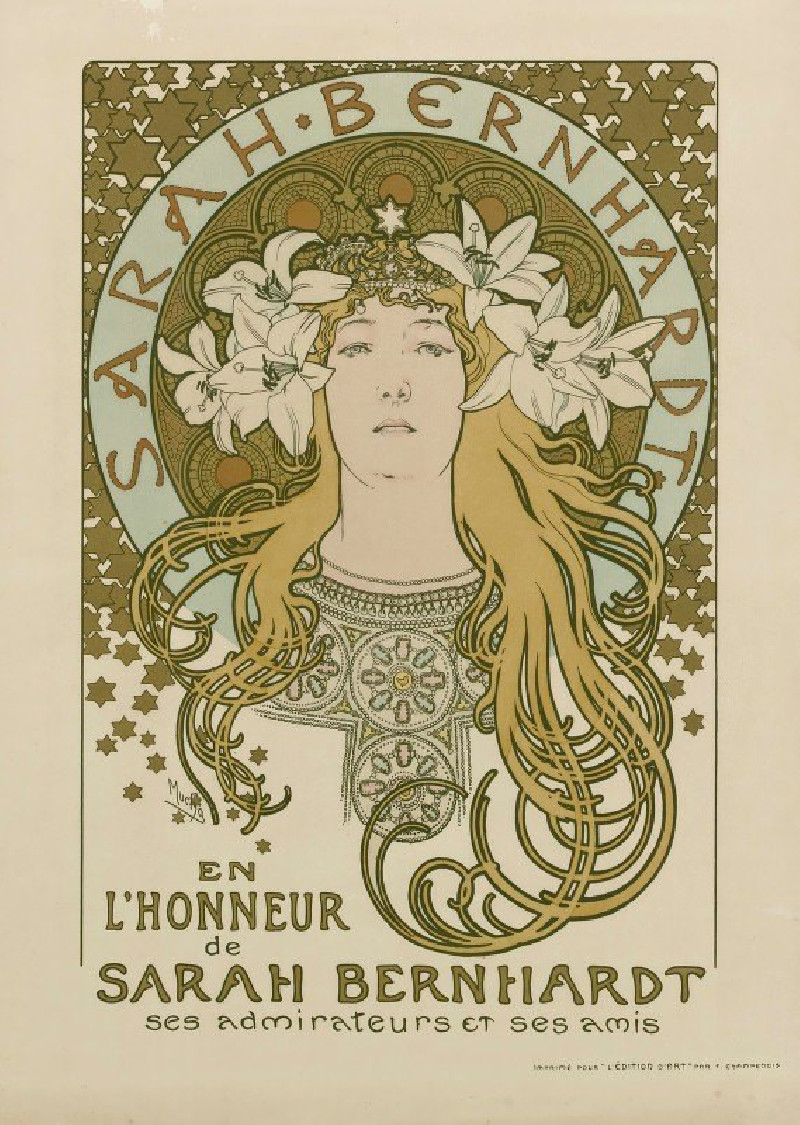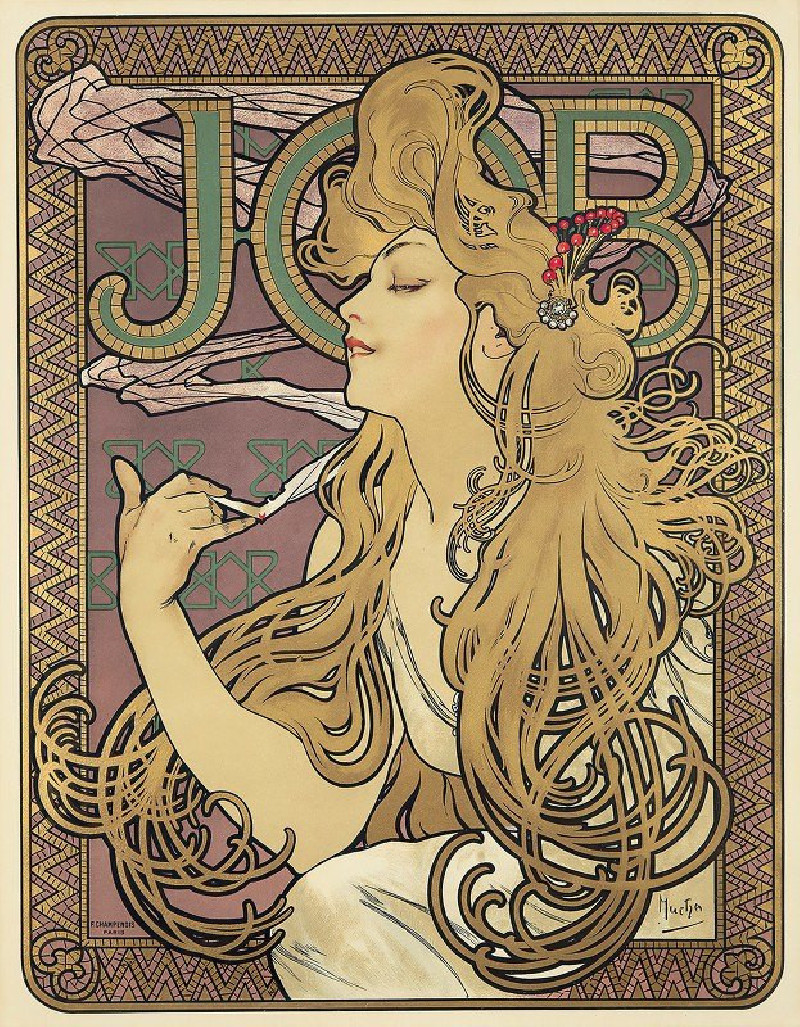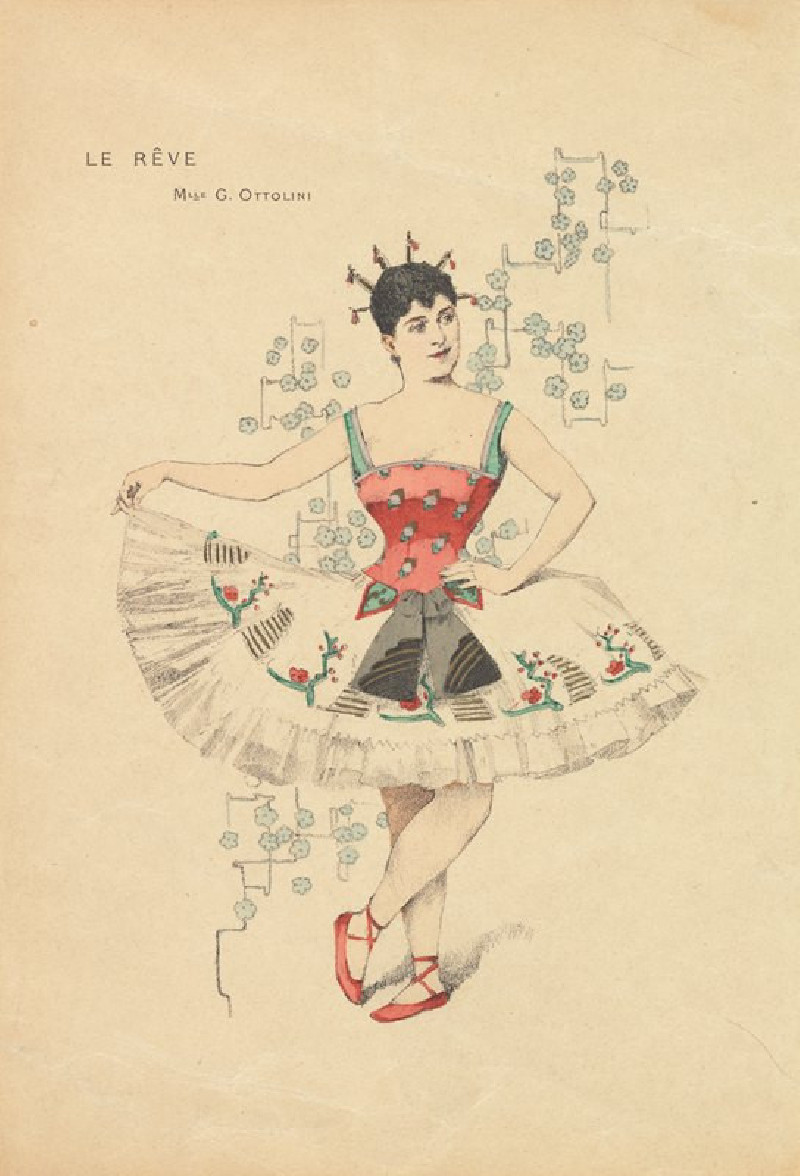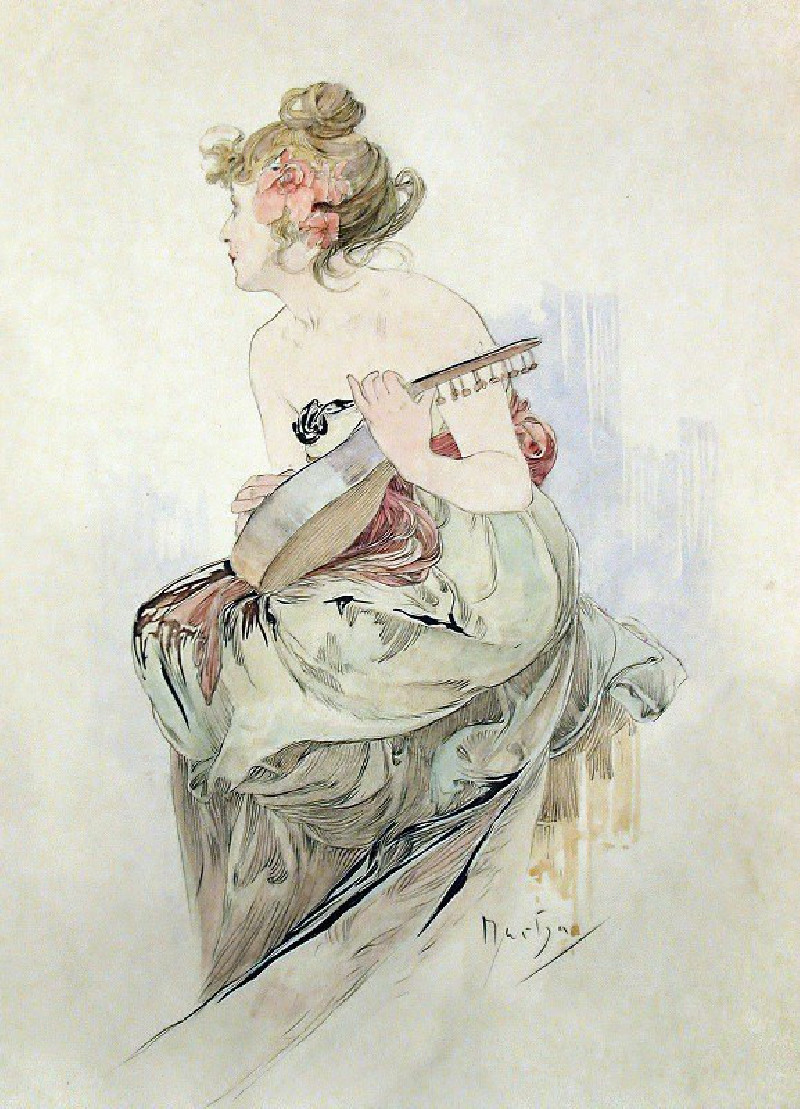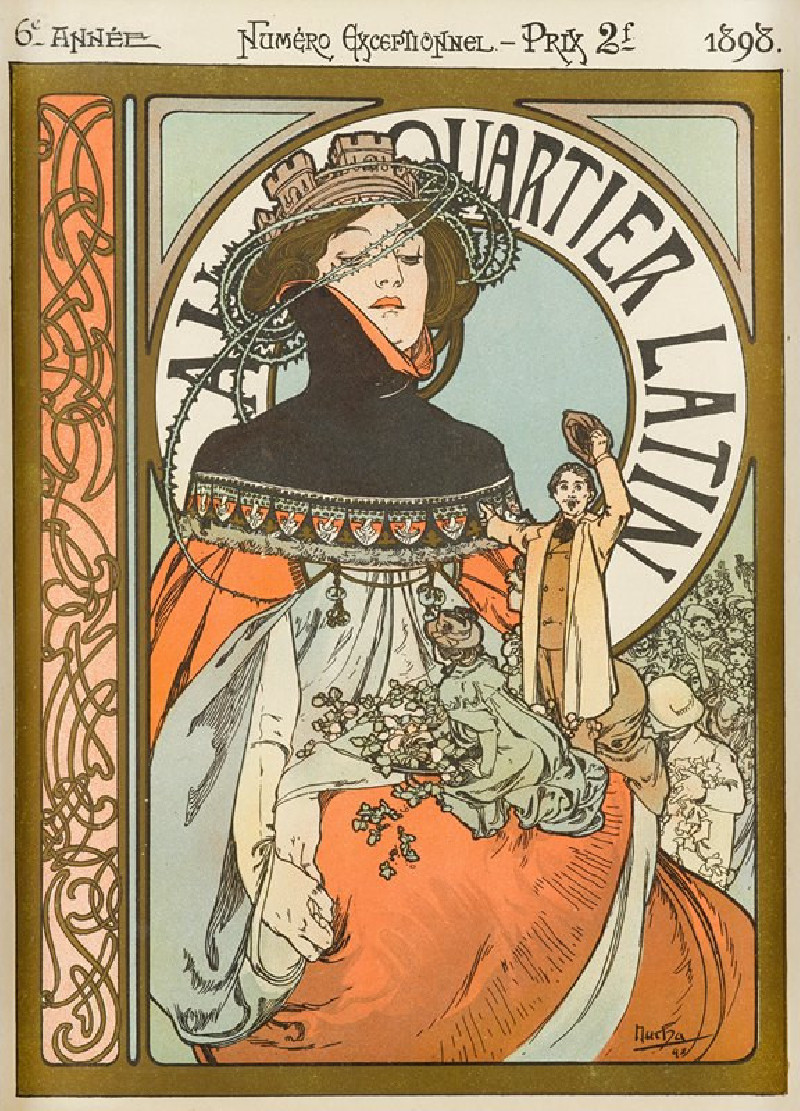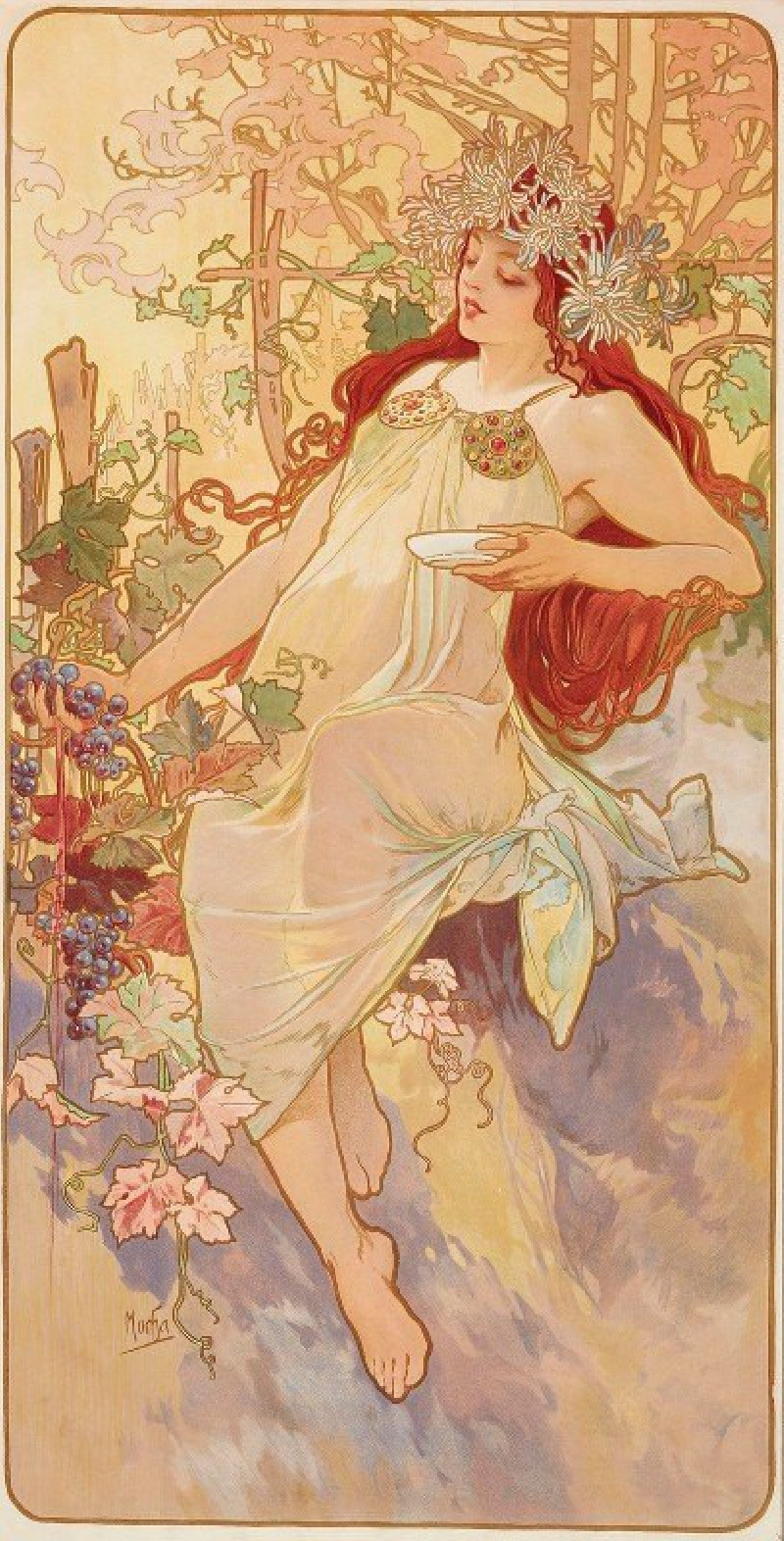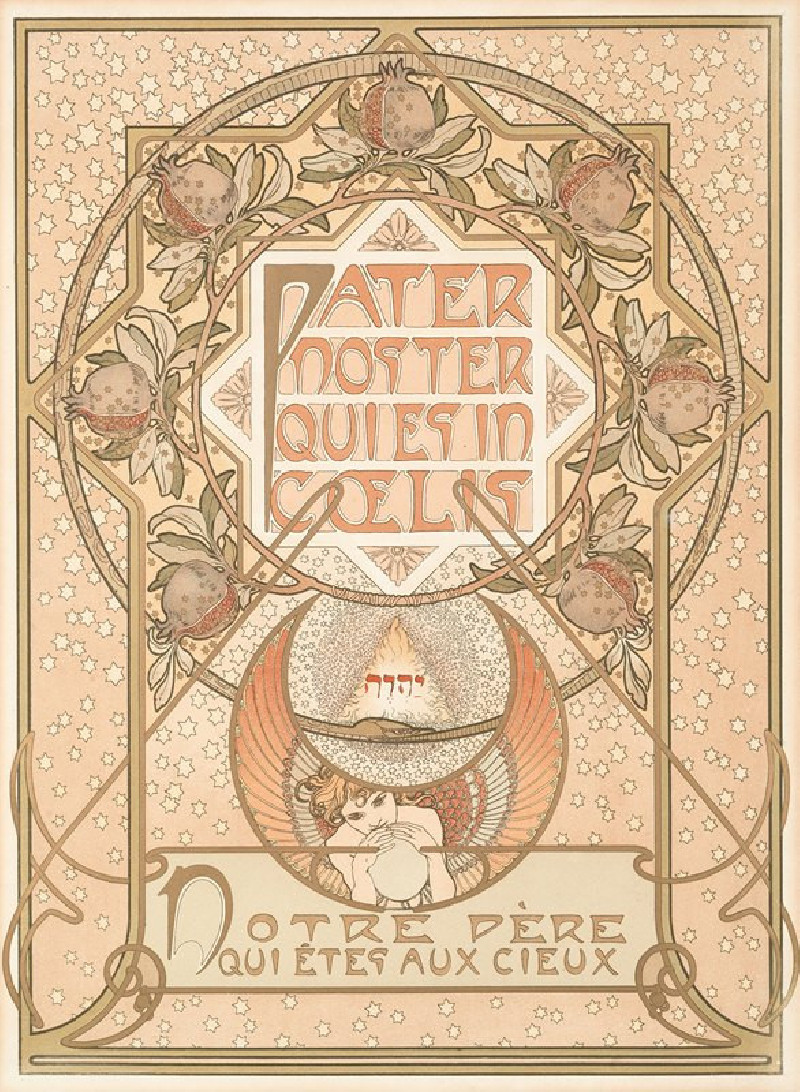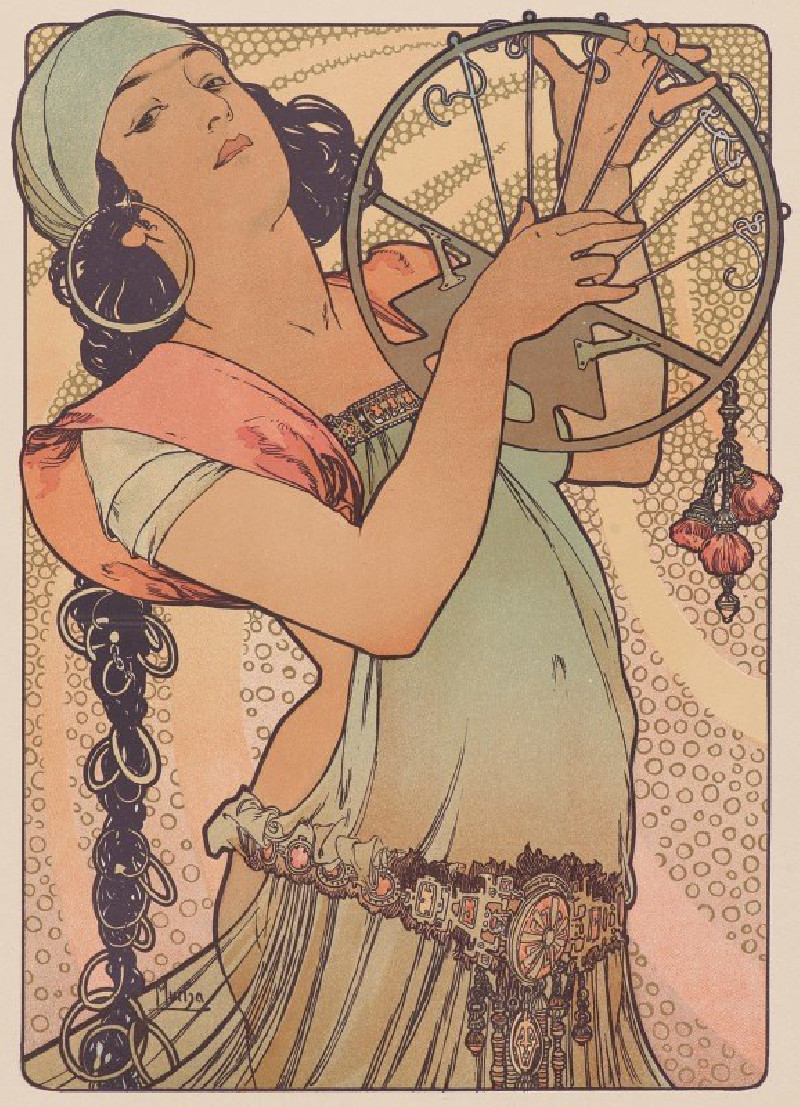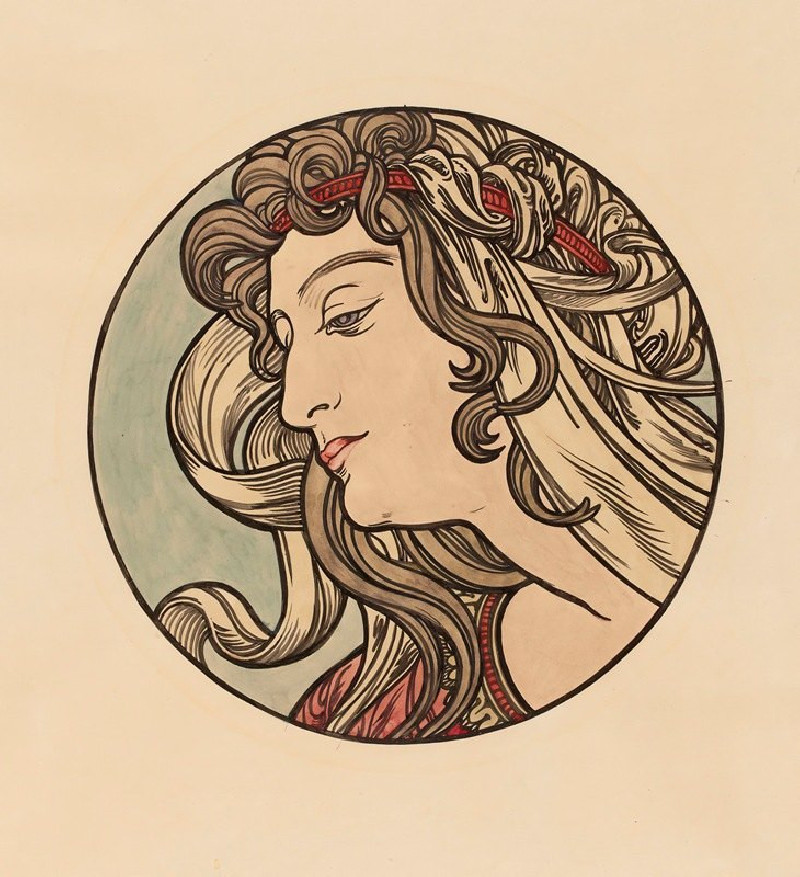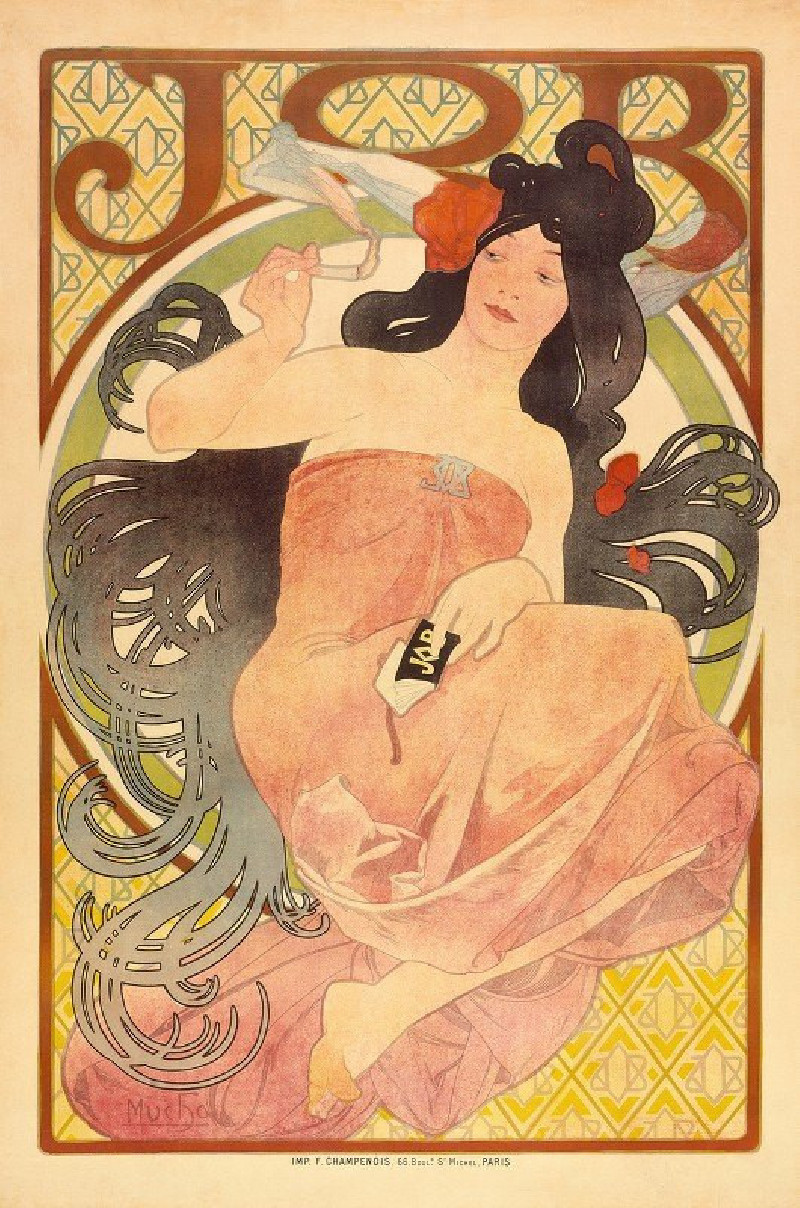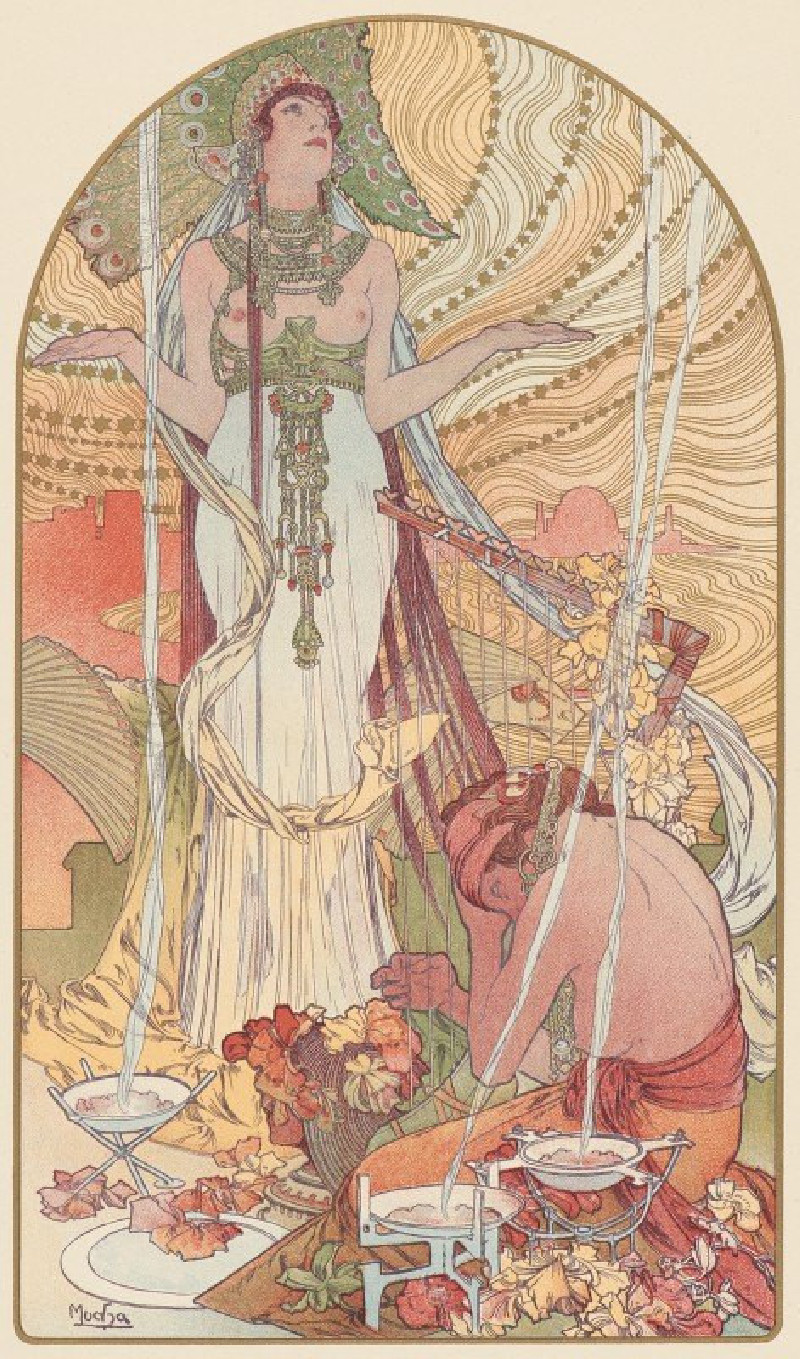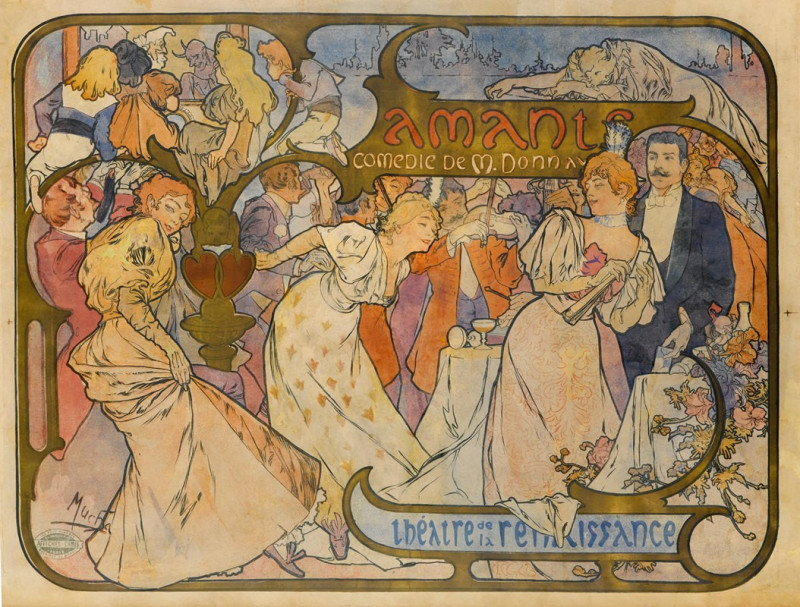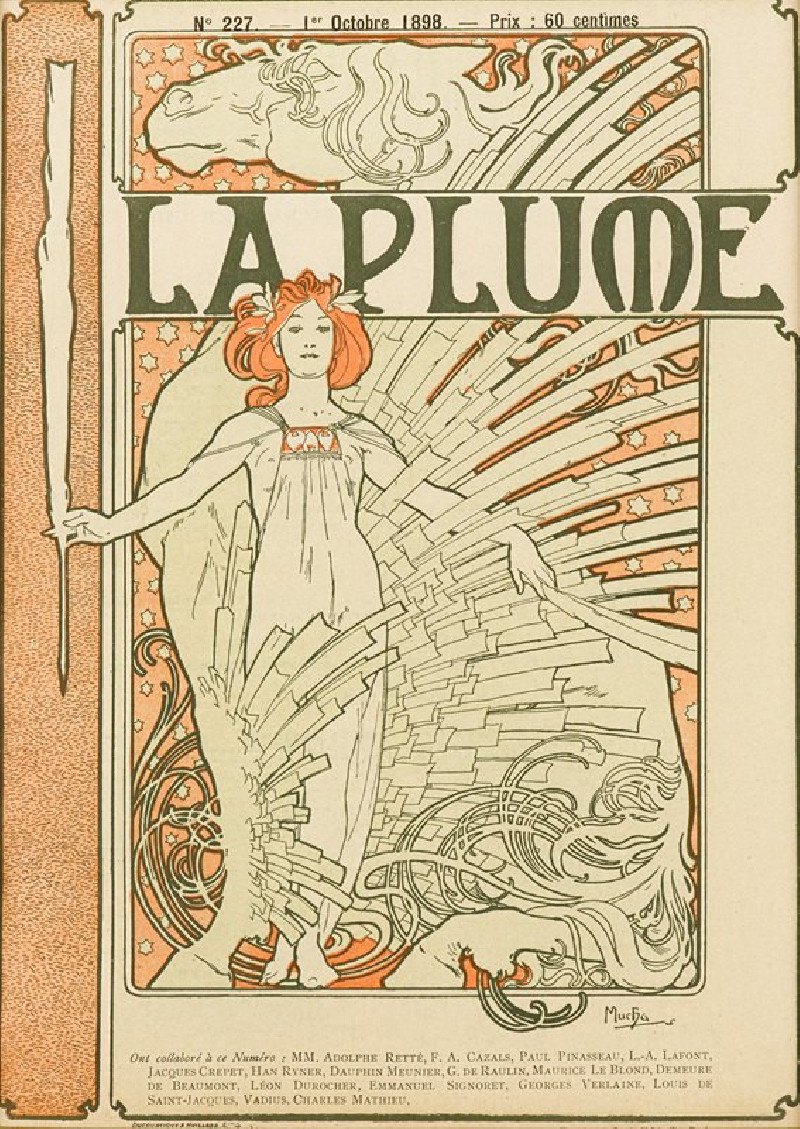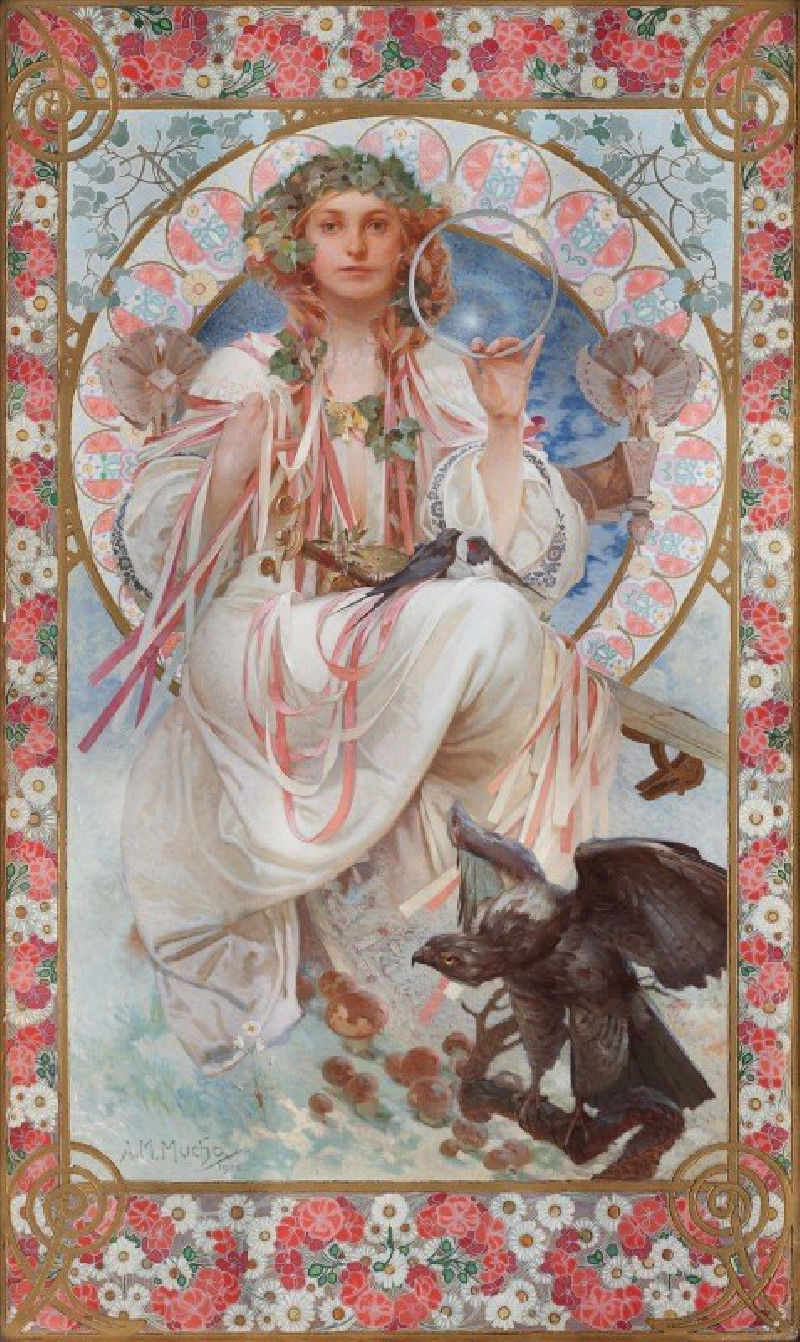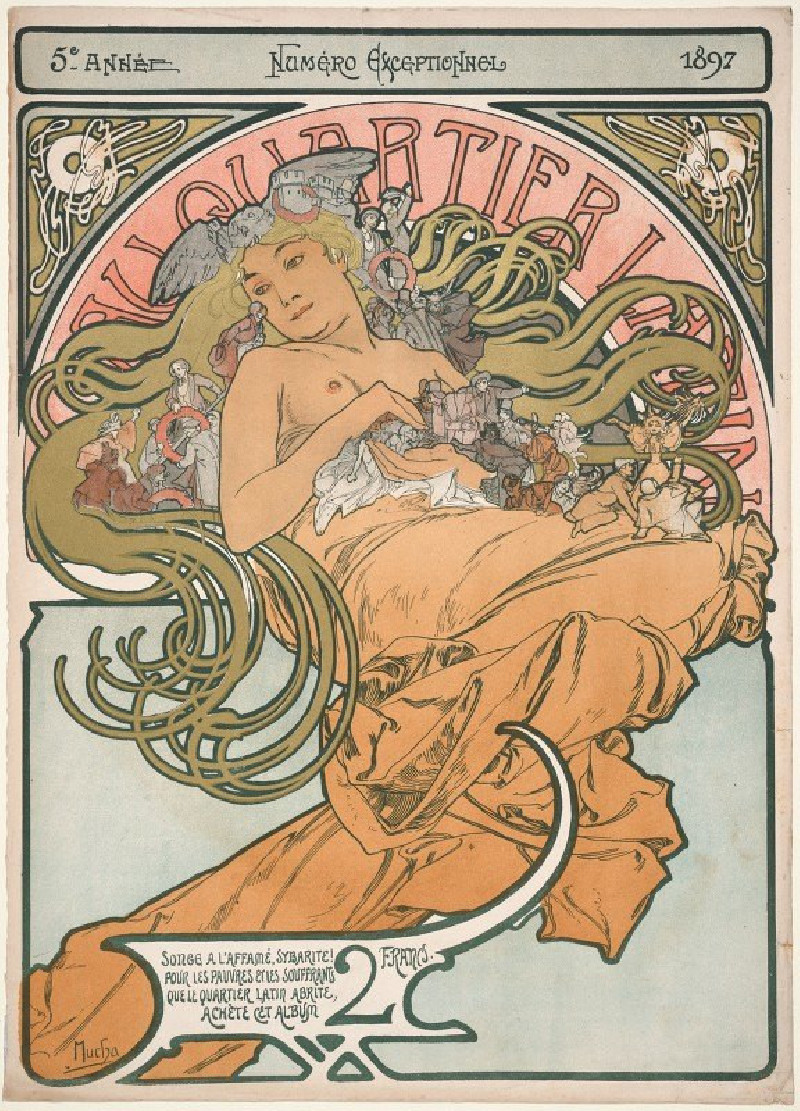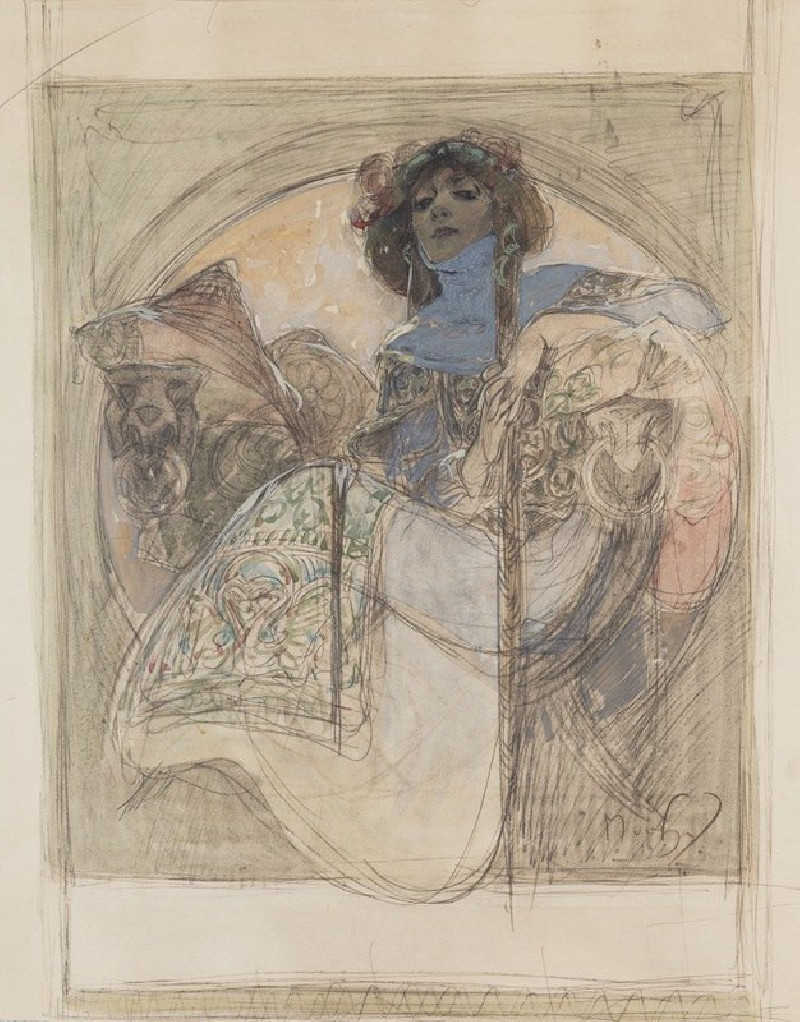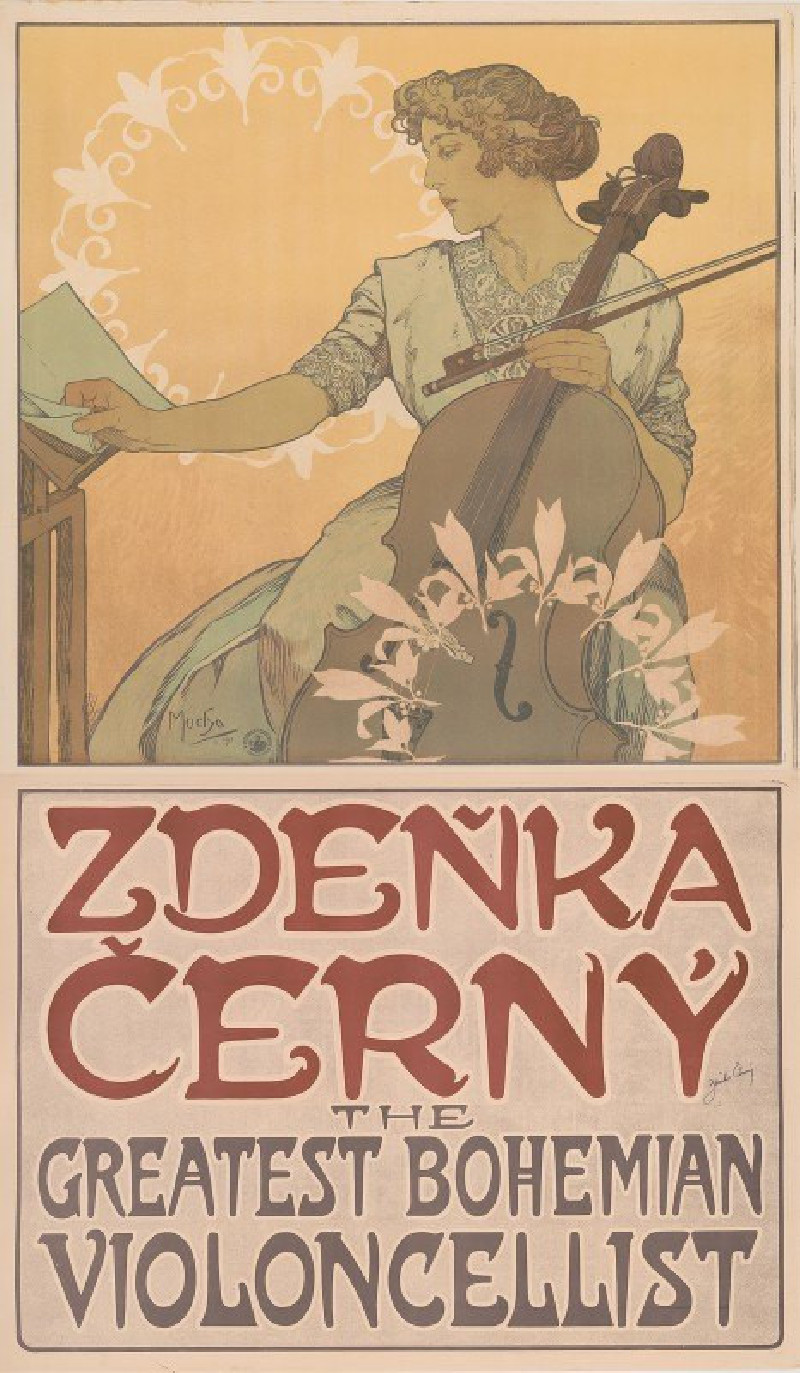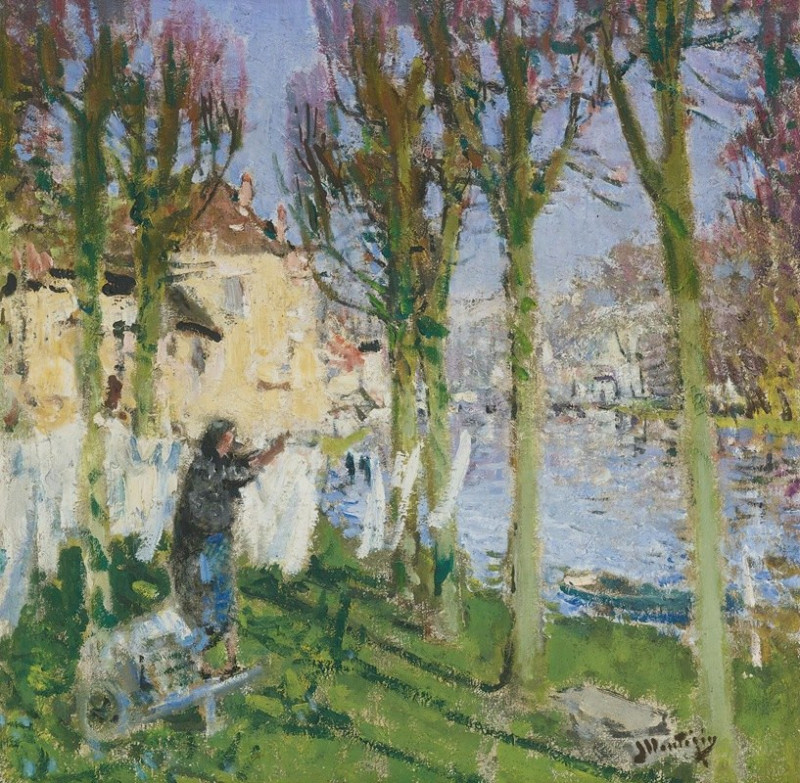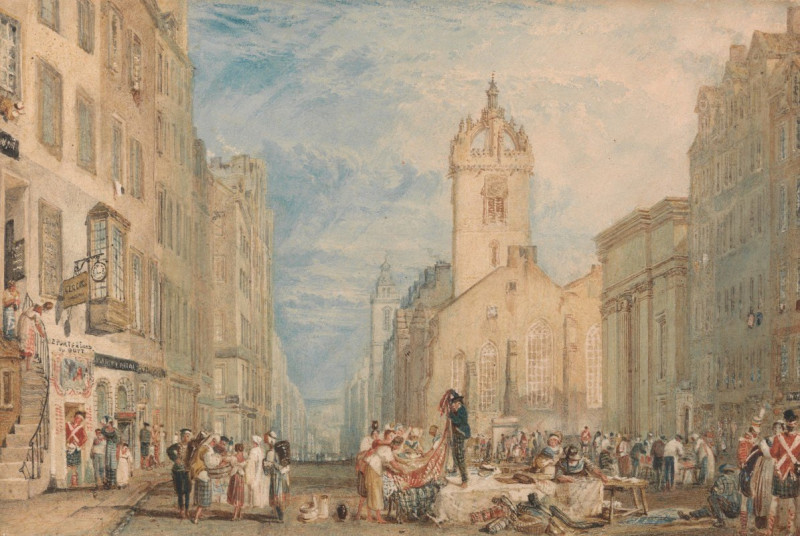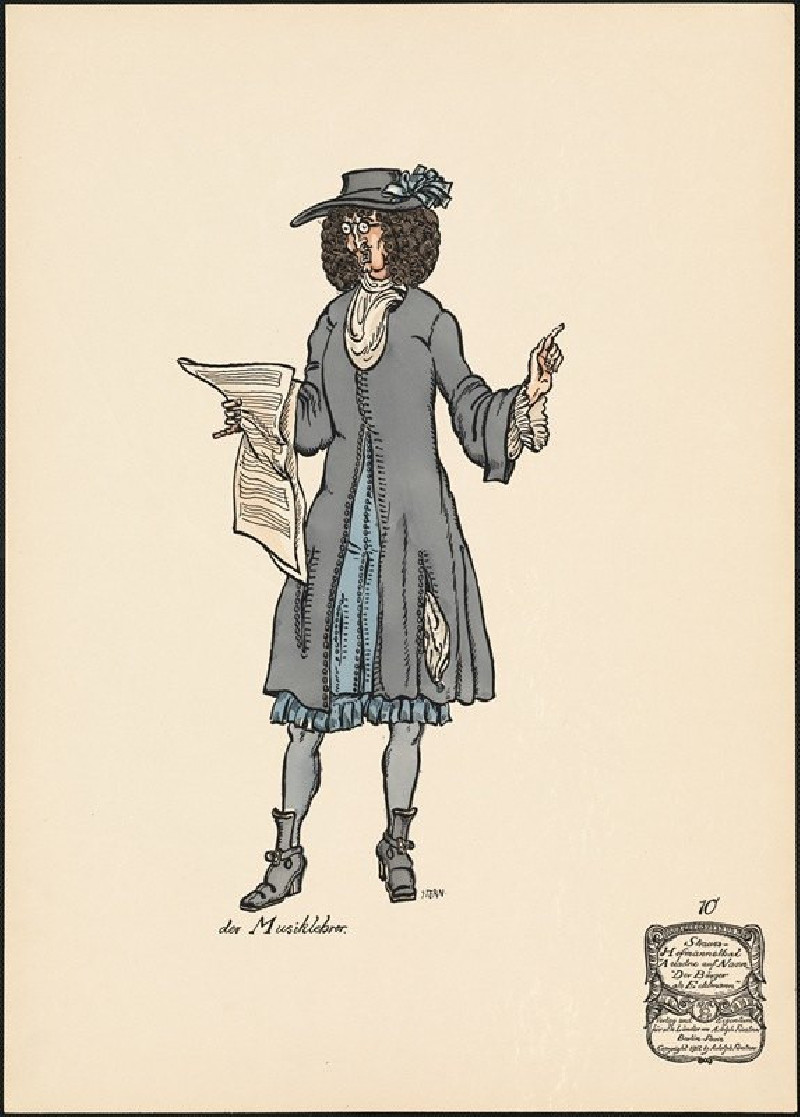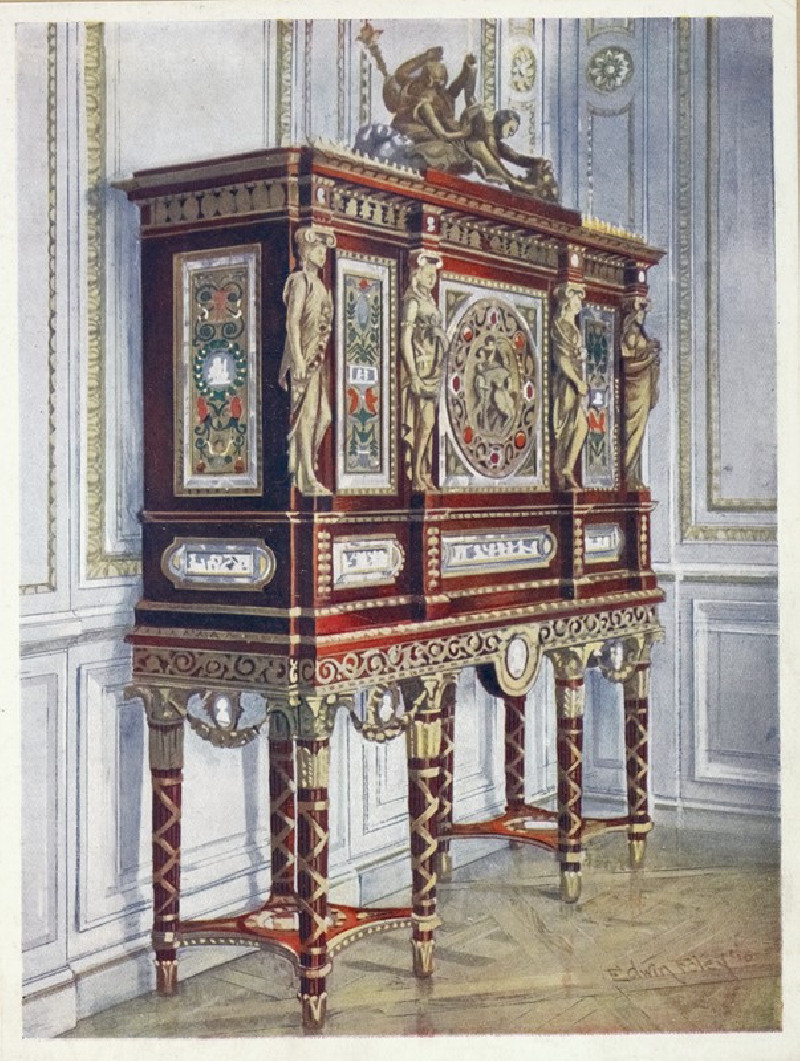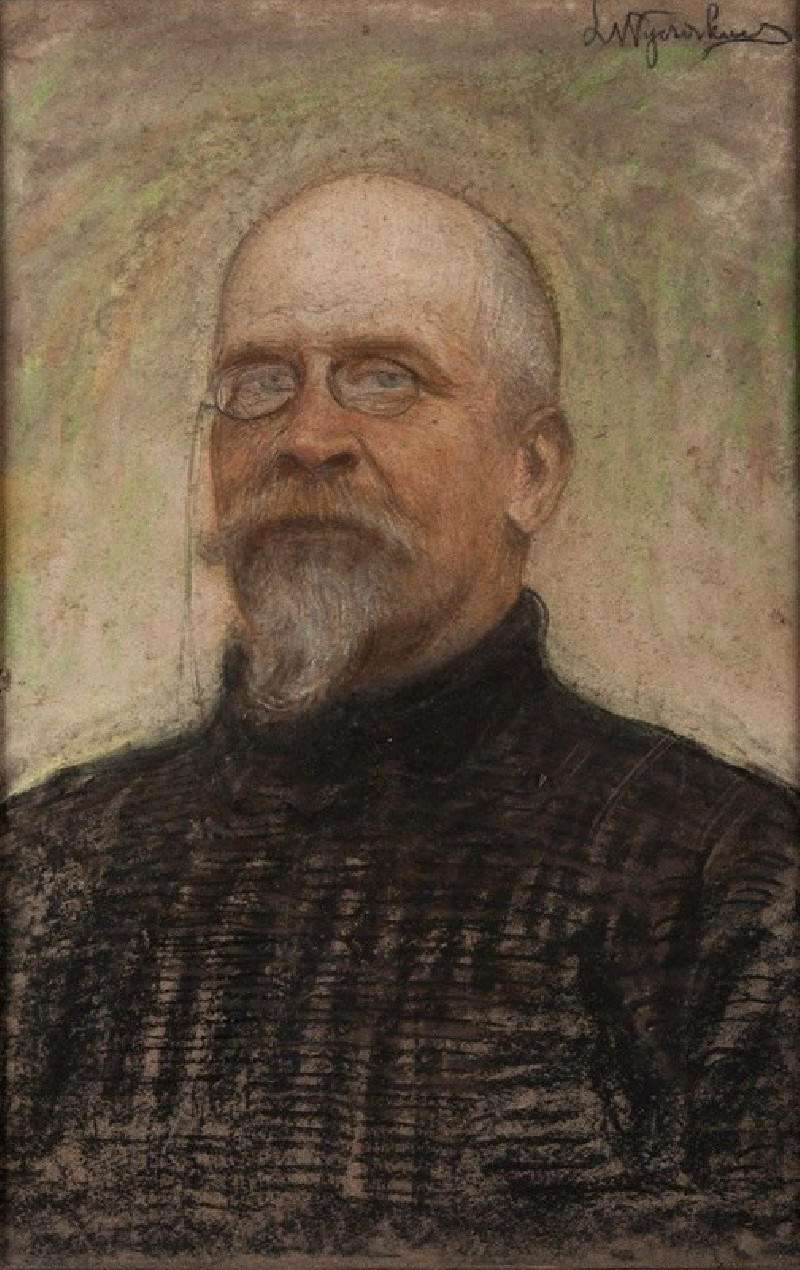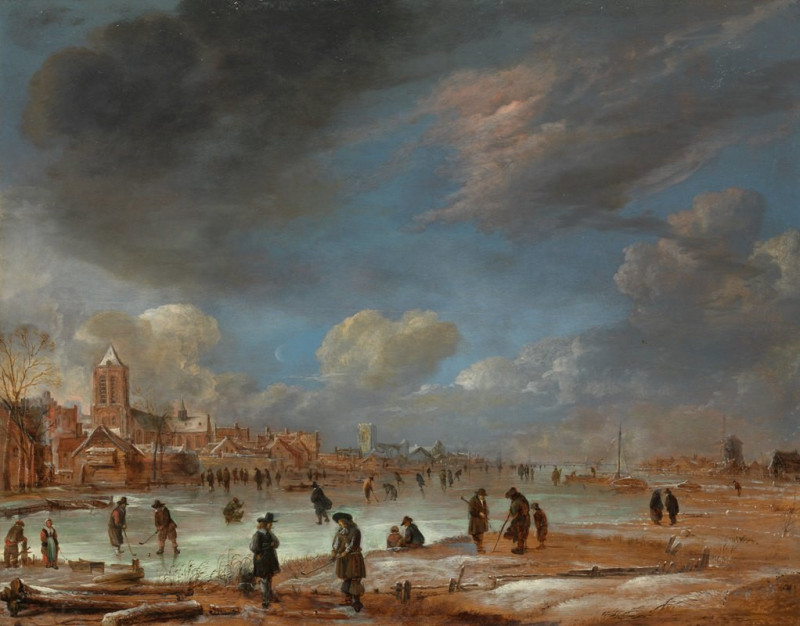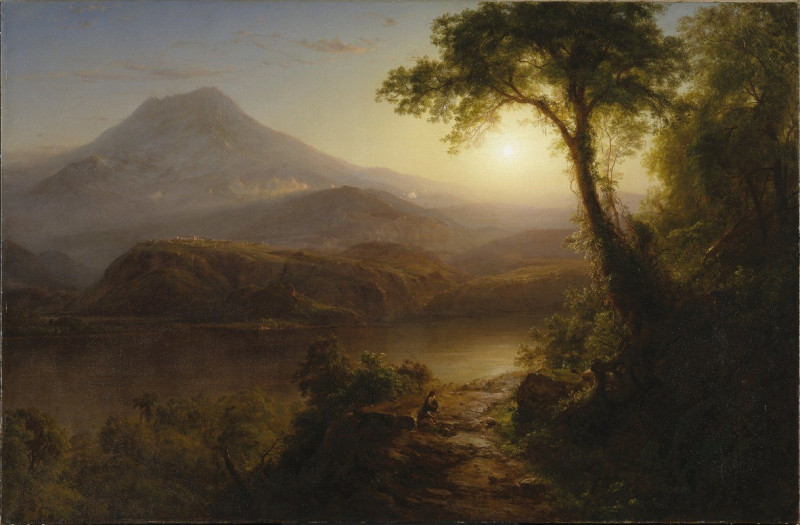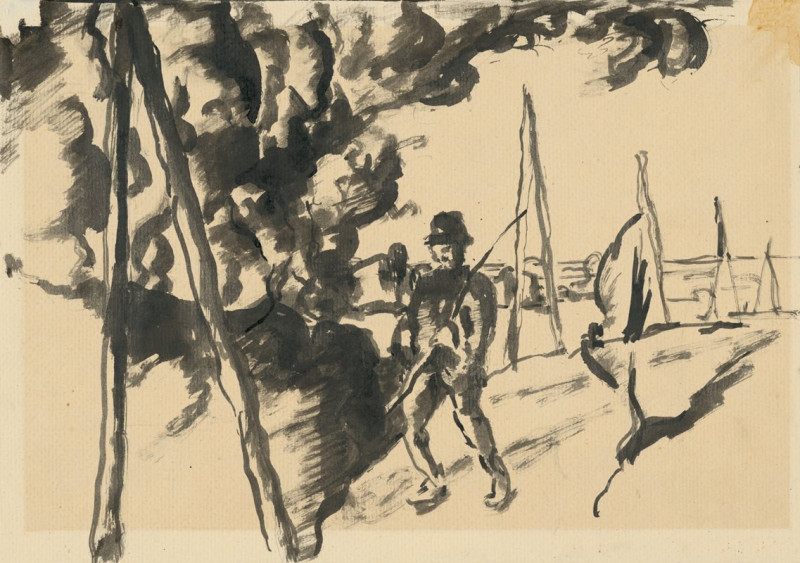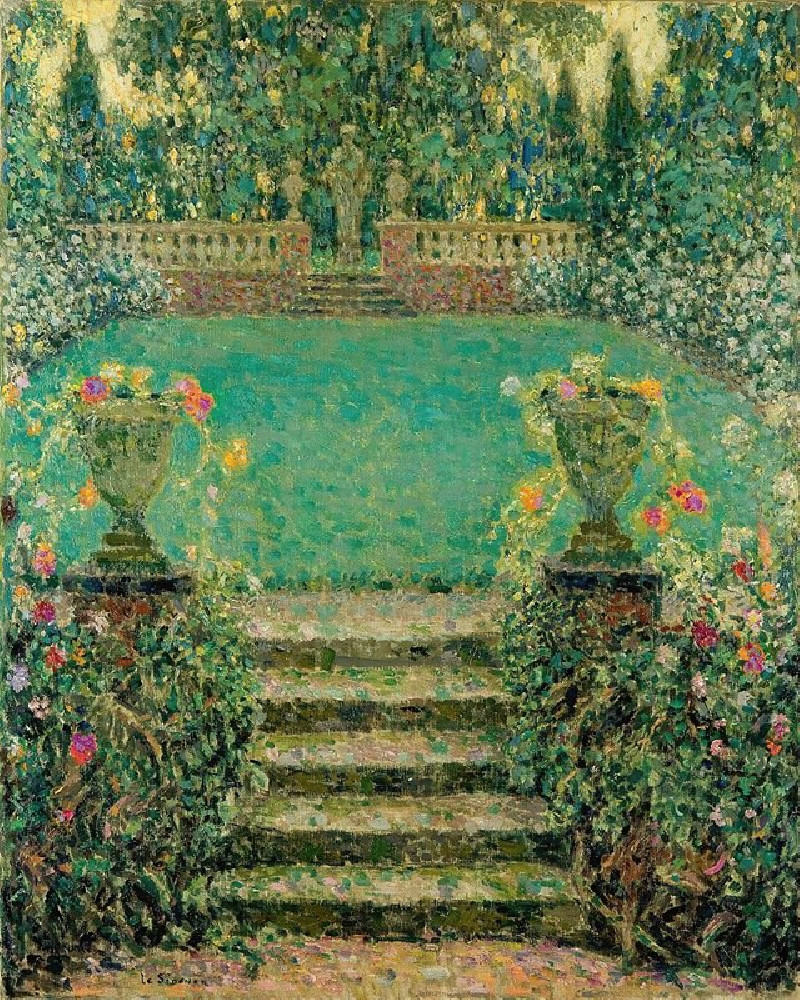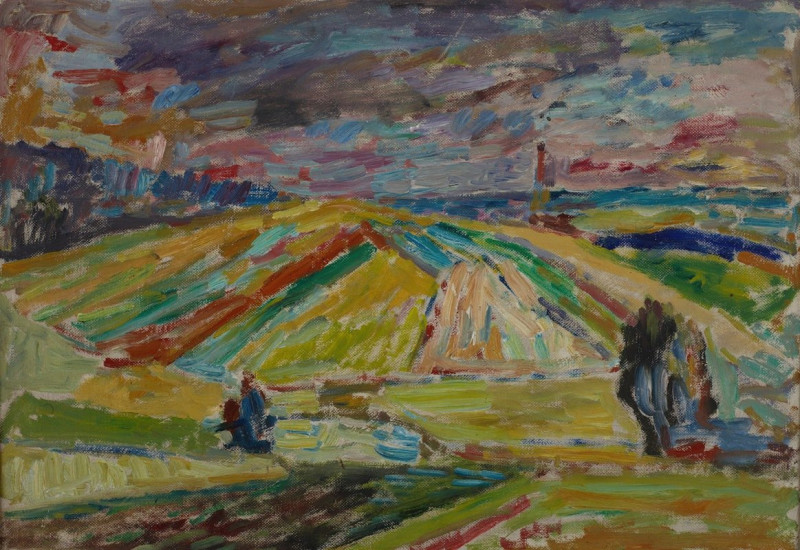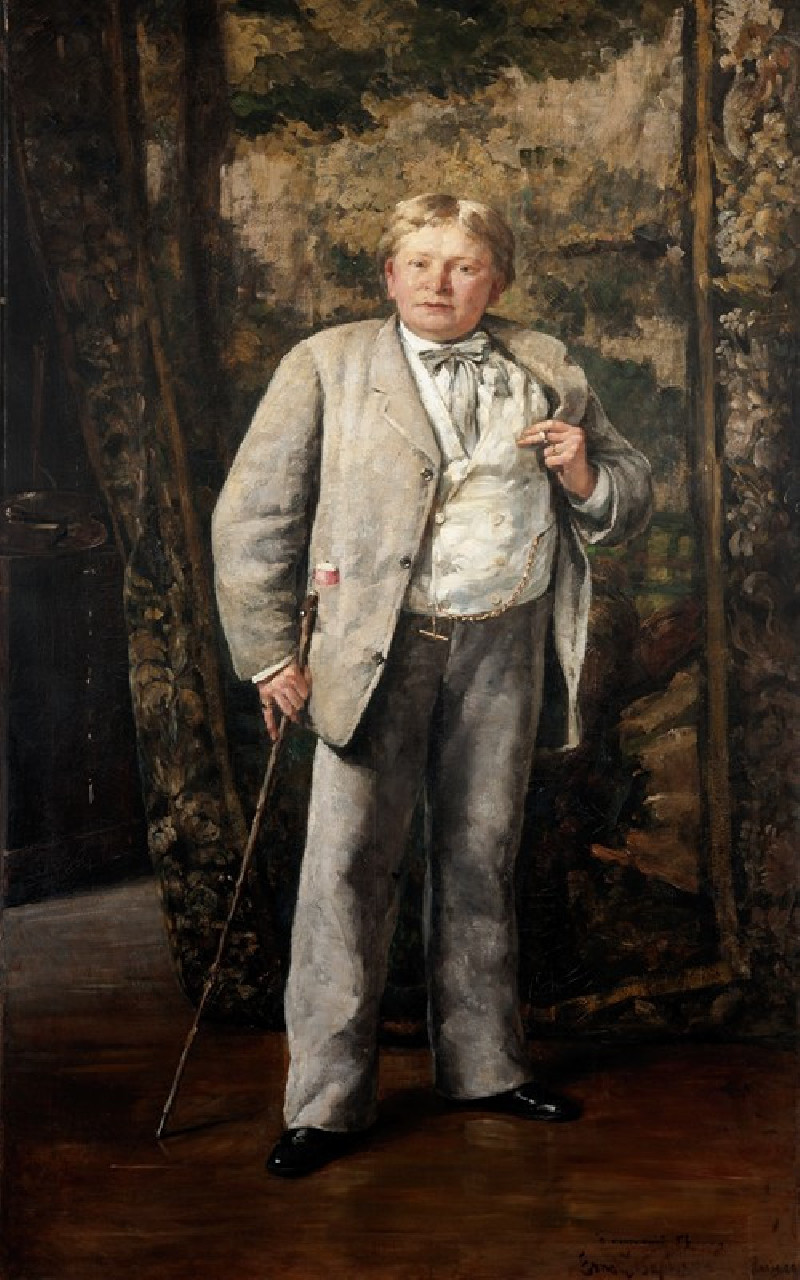Exécution de Katte
Technique: Giclée quality print
Recommended by our customers
More about this artwork
This image by Alphonse Mucha, titled "Exécution de Katte," portrays a dramatic and emotionally charged scene, likely from a historical or fictional narrative. The focal point of the painting is a figure in the center, who appears anguished as he extends his arm to halt another older man, who gestures urgently toward the right. A sense of tension is palpable in the interaction between these two figures.On the left side of the scene, through a large, polygonally-patterned window, a crowd can be seen, suggesting that a significant event is occurring outside, possibly the execution referenced in the title. A sense of public spectacle and communal involvement is indicated by the presence of the crowd outside.On the floor, there is a discarded, crumpled garment and an overturned chair, adding to the chaos and turbulence of the moment. This clutter suggests a rapid unravelling of events, an urgency or a struggle that has recently taken place.The use of sepia tones and the detailed rendering of light and shadow lend the scene a historical and somber quality, emphasizing the gravity of the situation depicted. The craftsmanship in the representation of textures, from the garments to the architectural details, showcases Mucha's skill in creating a rich, dynamic composition. This scene likely evokes themes of authority, conflict, and fate, resonating with emotional depth and historical context.
Delivery
Returns
Alphonse Maria Mucha also know internationally as Alphonse Mucha (1860-1939), was a Czech graphic artist, painter and illustrator. He lived in Paris during the Art Nouveau period, and is best know for his noticeably stylized and decorative theatrical posters like those of Sarah Bernhardt, the most famous actress in paris at the time. Mucha produced paintings, advertisements, book illustrations as well as designs for carpets, jewelry and theatre sets, in what was called the Mucha style. His works featured beautiful young women in neoclassical robes surrounded by flowers which formed as haloes.

